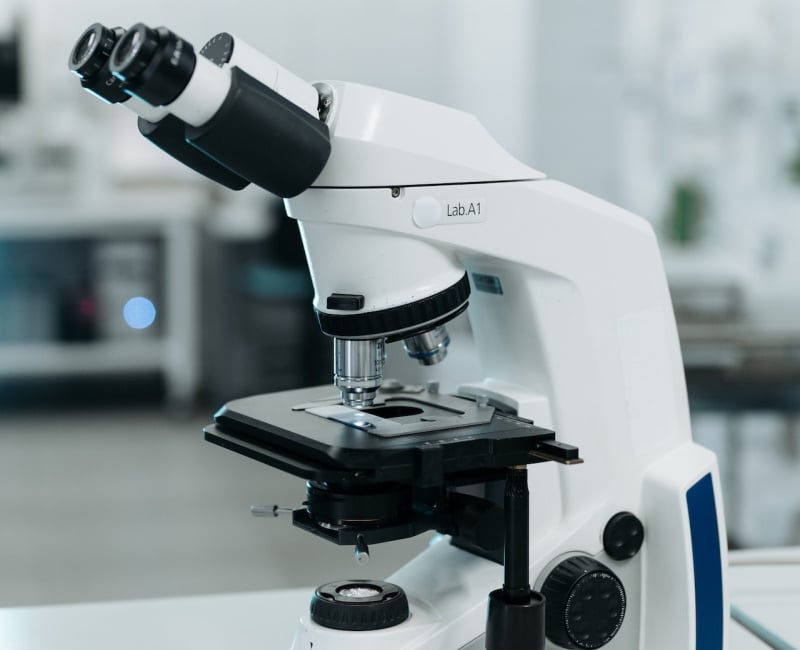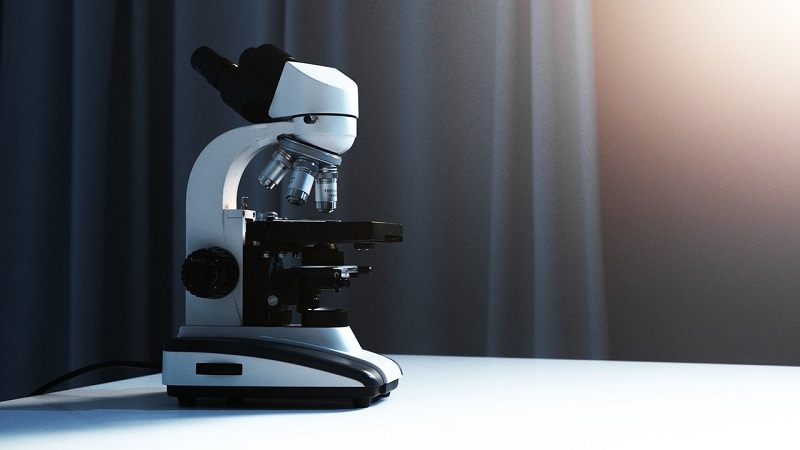How to Store a Microscope: 8 Tips and Tricks
Last Updated on

Microscopes are expensive and sensitive, which means it’s essential to handle and store the microscope properly. If you don’t store the microscope correctly, it could easily get damaged in between uses.
Here are eight tips and tricks to keep in mind when you store a microscope. These steps will ensure that the microscope is stored properly and resists damage in between uses.

Top 8 Tips on How to Store a Microscope:
1. Select the Right Container
Before you go to store your microscope, it’s important to select the right storage container. Ideally, you should purchase the right container whenever you purchase the microscope.
Most microscopes will come with a plastic tube that protects against dust and many liquids. If your microscope does not come with this, purchase a microscope cover separately at the minimum.
Consider purchasing an additional container that the microscope and its cover will go into. It’s a good idea to select a waterproof container specifically, especially if you live in a wet or humid environment. This container will provide extra protection, though it is not necessary.

2. Wash Your Hands Before Touching the Microscope
Anytime you touch your microscope, such as when you take it out of the box or store it again, wash your hands beforehand. Even if your hands feel clean, they have oils, dirt, and debris on them. These materials can damage the microscope. Washing your hands before ensures that your hands are clean.
3. Clean the Microscope Before Storage
Your hands are not the only items that ought to be cleaned before storage. You also want to clean the microscope. Failing to clean the microscope before storage can cause the device to sit in dirt and debris that damage the item over time.
To clean the microscope, remove dust using compressed air. You will want to spray the body of the microscope specifically. Use a solution, lint-free cloth, and soft paper to clean the microscope lenses. Lastly, use a disinfectant to clean the body, lenses, and all other parts of the microscope.
Allow the microscope to dry completely before placing it in any storage container. If you store the microscope wet or damp, it will get damaged in storage.

4. Don’t Touch Lenses With Your Fingers
While you are cleaning the microscope, be careful not to touch the lenses with your fingertips. Even if you were diligent in cleaning your hands before, you don’t want to risk damaging the delicate lenses or creating unsightly smudges.
5. Place the Microscope in the Correct Position
To ensure that the individual pieces don’t get broken while in storage, the microscope needs to be placed in the correct position.
All of the lenses should be turned so that they face the stage. Take a minute to wind up the cord as well. Secure the cord with a zip tie or some other similar device. Some microscopes will come with an area for you to wrap the cord around, which means you don’t need to secure the cord with ties.

6. Cover the Microscope
Once the microscope is cleaned and in its correct position, cover it up. Most microscopes come with a plastic microscope cover, as mentioned in the first tip. Cover the microscope effectively to ensure everything is ready to go.
7. Add an Extra Layer of Protection
If you are especially worried about your microscope, don’t hesitate to add an extra layer of protection. This extra layer of protection can include any container that you put the covered microscope in.
One of the best extra layers of protection is a simple plastic box with a lid. Place the microscope inside this box before storage. Although this is just a simple tip, it is one that can make a huge difference in the safety and longevity of your microscope.

8. Place the Container in the Right Location
The last thing you need to do to store your microscope correctly is to place the container in the correct location. Select a cool, dry location that does not have access to sunlight. Once you think you find a place, confirm that everything is stable and that nothing will knock into the microscope in the process.

What Position Should a Microscope be Stored In?
When storing a microscope, you want the lenses to all be facing the stage. Then, set the microscope upright in the storage location. In other words, it should not be on its side. It should be stored in the same position you use the microscope in.
How Do You Store Microscope Objectives?
Whenever you are storing a microscope, you will also have to store the parts of the microscope, including the objectives. Place the 4X objective over the stage.
Place all other separate parts in their case alongside the microscope. This plan will keep the objectives and other parts safe and together with the microscope.

Final Thoughts
Microscopes are delicate items that require special storage. By following the eight tips above, you will be able to store your microscope carefully.
If you learn nothing else from this article, just remember that you should clean your hands before touching a microscope, clean the microscope before storage, and store it in a cool, dry location. These three simple steps can make a huge difference!
Featured Image Credit: Ousa Chea, Unsplash
Table of Contents
- Top 8 Tips on How to Store a Microscope:
- 1. Select the Right Container
- 2. Wash Your Hands Before Touching the Microscope
- 3. Clean the Microscope Before Storage
- 4. Don’t Touch Lenses With Your Fingers
- 5. Place the Microscope in the Correct Position
- 6. Cover the Microscope
- 7. Add an Extra Layer of Protection
- 8. Place the Container in the Right Location
- What Position Should a Microscope be Stored In?
- How Do You Store Microscope Objectives?
- Final Thoughts
About the Author Robert Sparks
Robert’s obsession with all things optical started early in life, when his optician father would bring home prototypes for Robert to play with. Nowadays, Robert is dedicated to helping others find the right optics for their needs. His hobbies include astronomy, astrophysics, and model building. Originally from Newark, NJ, he resides in Santa Fe, New Mexico, where the nighttime skies are filled with glittering stars.
Related Articles:
How to Collimate Binoculars: 9 Expert Tips
How to Clean a Rifle Scope: 8 Expert Tips
How to Choose Binoculars for Bird Watching: 10 Expert Tips
How to Clean a Refractor Telescope: Step-by-Step Guide
How to Clean a Telescope Eyepiece: Step-by-Step Guide
Monocular vs Telescope: Differences Explained (With Pictures)
What Is a Monocular Used For? 8 Common Functions
How to Clean a Telescope Mirror: 8 Expert Tips
